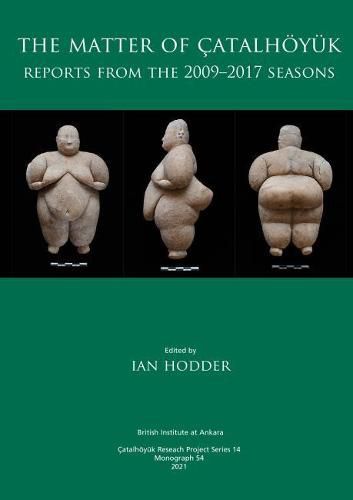Readings Newsletter
Become a Readings Member to make your shopping experience even easier.
Sign in or sign up for free!
You’re not far away from qualifying for FREE standard shipping within Australia
You’ve qualified for FREE standard shipping within Australia
The cart is loading…






This newest volume in the Catalhoeyuk Research Project Series continues the interpretation of the material obtained during excavation of the site from 2009 to 2017 under the direction of Professor Ian Hodder. Catalhoeyuk, a 9,000-year-old tell site in central Turkey, is of international importance due to its large size at an early date, its dense population and its long occupation. Its well-preserved buildings and rich art in the Neolithic East Mound give a unique insight into early village life, and the site allows study of many of the main questions dealing with the formation of settled villages/towns and the early intensification of agriculture. This volume, in 16 chapters by project specialists, focuses on the material artefacts recovered from the site, including a range of clay objects (ceramics, clay balls, tokens, figurines) and others made of stone, shell and textile. The analysis of these items, within a framework of intersecting and transformative flows of matter that are entangled with human aims and strategies, illuminates issues of procurement and exchange, house and community (including shifting cooking practices and the early management of cattle), and the organisation of production. Collectively, they reveal how change was generated across 1,100 years of occupation by the ‘productive potential’ of things.
$9.00 standard shipping within Australia
FREE standard shipping within Australia for orders over $100.00
Express & International shipping calculated at checkout
This newest volume in the Catalhoeyuk Research Project Series continues the interpretation of the material obtained during excavation of the site from 2009 to 2017 under the direction of Professor Ian Hodder. Catalhoeyuk, a 9,000-year-old tell site in central Turkey, is of international importance due to its large size at an early date, its dense population and its long occupation. Its well-preserved buildings and rich art in the Neolithic East Mound give a unique insight into early village life, and the site allows study of many of the main questions dealing with the formation of settled villages/towns and the early intensification of agriculture. This volume, in 16 chapters by project specialists, focuses on the material artefacts recovered from the site, including a range of clay objects (ceramics, clay balls, tokens, figurines) and others made of stone, shell and textile. The analysis of these items, within a framework of intersecting and transformative flows of matter that are entangled with human aims and strategies, illuminates issues of procurement and exchange, house and community (including shifting cooking practices and the early management of cattle), and the organisation of production. Collectively, they reveal how change was generated across 1,100 years of occupation by the ‘productive potential’ of things.